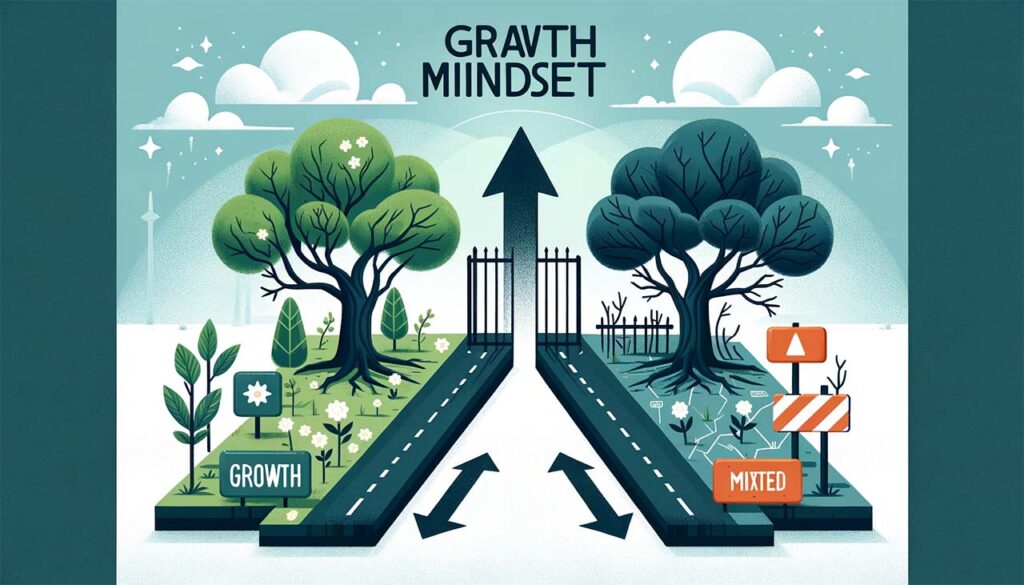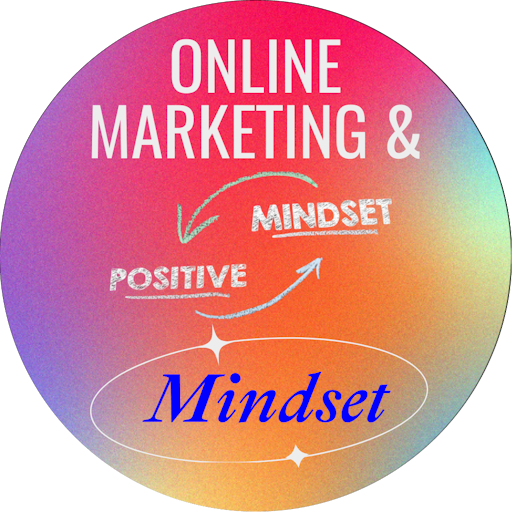Business mindset strategies are the cornerstone of any successful enterprise. In today’s rapidly evolving business landscape, the right mindset can be the difference between thriving success and mere survival. This article delves into the dynamic world of business mindset strategies, offering a guide not just to survive but to flourish in the competitive market. It’s more than just having a solid business plan or a robust product; it’s about the mindset that governs the approach to challenges, opportunities, and growth.

As we explore these transformative strategies, we uncover the immense power of mindset in shaping the trajectory of a business. From cultivating a growth mindset that embraces learning and resilience to adopting innovative approaches that balance risk with reward, each strategy is a vital piece of the puzzle. This guide illuminates the path for entrepreneurs, business owners, and professionals, providing them with actionable insights to harness the power of strategic thinking for unparalleled growth and success.
Join us on this enlightening journey, as we unravel the secrets to developing a business mindset that not only adapts to the changing tides of the business world but also sets the stage for exponential growth. Whether you are at the helm of a startup or steering an established company, these five proven strategies are your roadmap to achieving a business mindset that fosters lasting success in an ever-changing economic landscape.
Contents
ToggleSetting the Stage for Business Success: Understanding the Importance of Mindset
In the dynamic world of business, success often hinges on more than just a solid business plan or a robust product. The underlying force propelling a business towards exponential growth is the mindset of its leaders and teams.
By understanding and implementing these business mindset strategies, you can set the stage for a transformative journey in your business endeavours.

1: Cultivating a Growth Mindset
- Defining Growth Mindset: Beyond the Buzzword: A growth mindset, a term popularised by psychologist Carol Dweck, refers to the belief that one’s abilities and intelligence can be developed through dedication, hard work, and perseverance. In the business context, this mindset is pivotal as it encourages continuous learning, resilience, and adaptation in the face of challenges.
- Growth vs. Fixed Mindset: Contrasting Perspectives in Business: Contrasting this with a fixed mindset, where abilities are seen as static, a growth mindset in business means viewing challenges as opportunities, failures as learning experiences, and feedback as valuable information for improvement. This perspective shift is crucial for businesses aiming to thrive in today’s fast-paced and ever-changing market.
- Practical Steps to Develop a Growth Mindset: Daily Habits and Attitudes: Developing a growth mindset involves cultivating daily habits and attitudes that foster flexibility, curiosity, and a relentless pursuit of improvement. This includes setting learning goals, embracing challenges, persisting in the face of setbacks, getting useful feedback, and celebrating the success of others.
2: Embracing Risk and Innovation

The Role of Risk in Business Growth: Balancing Act
In the pursuit of business growth, embracing risk is not just inevitable; it’s essential. However, it’s a balancing act. Successful businesses understand that risk-taking, when managed wisely, can lead to groundbreaking innovations and significant competitive advantages. This section explores how calculated risks can be a catalyst for growth, pushing businesses beyond their comfort zones into new realms of possibility.
Fostering Innovation: Creating a Culture of Creative Thinking: Innovation is the lifeblood of business growth, and it thrives in environments where creative thinking is encouraged and nurtured. This part of the section delves into strategies for fostering an innovative culture within your organisation.
It involves promoting open communication, encouraging divergent thinking, and creating an atmosphere where new ideas are welcomed and explored. By doing so, businesses can tap into a wealth of creative potential that drives progress and differentiation in the market.
Innovation, undeniably, stands as the cornerstone of business growth and sustainability. It flourishes in environments where creativity is not just encouraged but deeply ingrained in the organisational ethos. This segment of our discussion focuses on elucidating strategies to cultivate an innovative culture within your organisation, a culture that acts as a catalyst for growth and market differentiation.
Promoting Open Communication: The bedrock of an innovative culture is open communication. This involves creating channels where ideas can flow freely without hierarchical barriers. Regular brainstorming sessions, open forums, and suggestion schemes can be instrumental.
Encouraging employees to voice their opinions and ideas without fear of criticism or dismissal fosters a sense of belonging and investment in the company’s future. Digital platforms can also be leveraged to create virtual suggestion boxes or forums where ideas can be shared and discussed.
Encouraging Divergent Thinking: Divergent thinking is a key driver of innovation. It involves looking at problems and challenges from multiple perspectives and exploring a variety of solutions. To encourage this, organisations can provide training in creative problem-solving techniques, such as lateral thinking and the Six Thinking Hats method.
Workshops and team-building activities focused on creative thinking can also stimulate divergent thought processes. Encouraging employees to step outside their comfort zones and consider unconventional approaches can lead to groundbreaking innovations.
Creating an Atmosphere of Experimentation: An innovative culture is one where experimentation is encouraged, and failure is viewed as a stepping stone to success. Creating ‘safe-to-fail’ environments where employees can test new ideas without the fear of repercussions is crucial.
This can be achieved by setting aside dedicated time and resources for experimentation and innovation projects. Recognising and celebrating both successes and constructive failures reinforces the message that experimentation is valued.
Cross-functional Collaboration: Innovation often happens at the intersection of different fields and specialisations. Encouraging cross-functional collaboration can lead to a fusion of ideas and perspectives, sparking innovation. This can be facilitated through mixed departmental teams working on specific projects, job rotation programs, or regular inter-departmental meetings to share knowledge and ideas.
Investing in Continuous Learning and Development: A workforce that is continuously learning is more likely to innovate. Providing opportunities for professional development, whether through training, workshops, or access to learning resources, keeps employees abreast of the latest trends and technologies. This not only enhances their skill sets but also provides fresh insights and ideas that can fuel innovation.
Leadership that Inspires Innovation: Leadership plays a pivotal role in shaping an innovative culture. Leaders who are open to new ideas, willing to take calculated risks, and able to inspire their teams can drive innovation throughout the organisation. They should lead by example, demonstrating a commitment to innovation in their actions and decisions.
Rewarding and Recognising Innovation: Recognising and rewarding innovative ideas and efforts can significantly boost morale and encourage continuous creative thinking. This can be in the form of monetary rewards, public recognition, or opportunities for career advancement. Celebrating innovation successes, big or small, reinforces the value placed on creative thinking and risk-taking.
By implementing these business mindset strategies, businesses can create a fertile ground for innovation, harnessing the collective creativity and intelligence of their workforce. This not only drives progress and differentiation in the market but also fosters a dynamic and fulfilling work environment.
Learning from Failure: Turning Setbacks into Opportunities
One of the most critical aspects of embracing risk is the ability to learn from failure. This segment discusses how businesses can cultivate a mindset that views setbacks not as defeats but as valuable learning opportunities.
It involves analysing failures to understand what went wrong, adapting strategies accordingly, and moving forward with enhanced knowledge and resilience. This approach helps businesses evolve and avoid repeating the same mistakes, turning potential losses into strategic gains.
Embracing risk and innovation is not about recklessness; it’s about strategic risk-taking and creative problem-solving. By understanding and applying these business mindset strategies and principles, businesses can position themselves for dynamic growth and long-term success in an ever-evolving business landscape.
3: The Power of Vision and Goal Setting

Crafting a Compelling Vision: The Foundation of Business Strategy
At the core of every thriving business is a compelling vision, a beacon that illuminates the path forward. This vision is more than a statement; it’s a powerful force that provides direction, purpose, and a sense of shared destiny.
In this section, we delve into the critical importance of articulating a vision that is both clear and inspiring, one that resonates deeply with every stakeholder involved, from employees to customers.
- Defining the Vision: The first step is defining a vision that is both aspirational and achievable. It should encapsulate not just where the business wants to be in the future, but also reflect its core values and purpose. A well-crafted vision statement acts as a strategic compass, guiding the company through the complexities of its business journey.
- Communicating the Vision: Once defined, the vision must be effectively communicated across the organisation. This involves more than just sharing a written statement; it requires a narrative that connects with people on an emotional level. Leaders play a crucial role here, consistently reinforcing the vision through their words and actions, ensuring it becomes a part of the organisational DNA.
- Aligning with Stakeholders: A vision must resonate with all stakeholders, including employees, customers, investors, and partners. It should align with their aspirations and values, creating a sense of shared purpose. Engaging stakeholders in the vision-building process can enhance their commitment and support, making them active participants in the journey.
- Motivating and Inspiring the Team: A clear and compelling vision serves as a powerful motivational tool. It helps employees understand the bigger picture and their role in achieving it. When team members are aligned with the vision, they are more likely to be engaged, passionate, and committed to their work, driving productivity and innovation.
- Guiding Strategic Decisions: A vision acts as a yardstick for strategic decision-making. It ensures that every choice and action taken by the company is aligned with its long-term objectives. This strategic alignment helps in prioritising initiatives, allocating resources, and navigating challenges, keeping the business on track towards its goals.
- Building a Strong Brand Identity: A well-articulated vision contributes significantly to building a strong brand identity. It differentiates the business in the market, attracting customers and partners who share similar values and beliefs. A strong vision can transform customers into brand advocates, enhancing the company’s reputation and reach.
- Adapting and Evolving: In a rapidly changing business environment, a vision might need to evolve to stay relevant. Regularly revisiting and, if necessary, refining the vision ensures that it continues to be ambitious yet attainable, reflecting the current realities and future aspirations of the business.
We have explored the multifaceted role of a vision in business success. It underscores the necessity of a vision that is not only clearly defined and effectively communicated but also deeply integrated into the fabric of the organisation.
Such a vision becomes a powerful catalyst for motivation, strategic alignment, brand building, and sustained growth, propelling the business towards its aspirational future.
SMART Goals: A Framework for Achievable Objectives
To translate vision into reality, setting specific, measurable, achievable, relevant, and time-bound (SMART) goals is crucial. In the pursuit of realising a business vision, setting SMART goals is an indispensable strategy.
This part of the section explores how SMART (Specific, Measurable, Achievable, Relevant, and Time-bound) goals can act as a clear and structured roadmap to turn your overarching business vision into reality. This approach involves breaking down the grand vision into smaller, more manageable objectives, making the journey towards the ultimate goal less daunting and more achievable.
- Specific: The first step is to ensure that each goal is specific and clearly defined. This means moving away from vague aspirations and towards concrete objectives. For instance, instead of setting a goal to ‘increase sales’, a specific goal would be ‘increase sales of Product X by 15% in the next quarter’. This clarity helps in focusing efforts and resources effectively.
- Measurable: Each goal must have criteria for measuring progress and success. This involves identifying quantifiable indicators that can track the extent to which a goal is being met. Measurable goals enable businesses to monitor progress, make necessary adjustments, and stay motivated by celebrating milestones along the way.
- Achievable: While goals should be challenging, they also need to be realistically attainable. Setting overly ambitious goals that are out of reach can lead to frustration and demotivation. Achievable goals, on the other hand, strike a balance between stretching the capabilities of the organisation and remaining within the realm of possibility.
- Relevant: Goals should be aligned with the broader business vision and values. This relevance ensures that each goal contributes meaningfully towards the bigger picture, ensuring that resources and efforts are being directed towards objectives that truly matter to the business.
- Time-bound: Assigning a clear timeline to each goal is crucial. This not only creates a sense of urgency but also allows for the planning and allocation of resources in a timely manner. Time-bound goals help in maintaining momentum and focus, ensuring that the business is moving steadily towards its vision.
By applying the SMART framework, businesses can transform their vision into a series of actionable steps. This methodical approach not only makes the vision more attainable but also provides a clear structure for tracking progress and maintaining focus.
It allows for a systematic progression towards the vision, where each achieved goal builds upon the last, creating a ladder of success that culminates in the realisation of the overarching business vision.
The art of setting SMART goals is a critical tool in the journey towards achieving a business vision. It emphasises the importance of breaking down the vision into smaller, well-defined, and manageable objectives, thereby making the path to success less overwhelming and more attainable.
These business mindset strategies and strategic approaches not only bring clarity and direction but also instill a sense of achievement and motivation as each goal is met, propelling the business forward in its quest for success.
Aligning Vision with Action: Strategies for Implementation
Having a vision and setting goals is just the beginning. The real challenge lies in aligning these with day-to-day actions. In this segment, we delve into practical business mindset strategies that ensure every action within the organisation is aligned with and contributes to the broader vision. Achieving this alignment requires a multifaceted approach, encompassing effective communication, cultural integration, and the dynamic management of goals.
Effective Communication of the Vision:
- Regular Reinforcement: The vision should be communicated frequently and through various channels – meetings, emails, company events, and internal communications platforms. This regular reinforcement helps keep the vision at the forefront of everyone’s mind.
- Storytelling: Utilise storytelling to make the vision more relatable and memorable. Share stories of how the vision is being realised within the organisation, highlighting successes and learning experiences.
- Leadership Example: Leaders should embody the vision in their daily actions and decisions. When leaders consistently demonstrate commitment to the vision, it sets a powerful example for the rest of the organisation.
Embedding the Vision into Company Culture:
Integration in Policies and Procedures: Ensure that company policies, procedures, and practices are aligned with the vision. This could involve revising recruitment processes, performance evaluations, and reward systems to reflect the vision’s priorities.
- Employee Engagement: Engage employees in discussions about the vision and its implications for their work. Encourage them to contribute ideas on how to better align their roles with the vision.
- Training and Development: Offer training programs that help employees develop skills and knowledge aligned with the vision. This not only supports their personal growth but also enhances their ability to contribute to the vision.
- Regularly Reviewing and Adjusting Goals:
- Set Regular Review Milestones: Establish regular intervals (quarterly, bi-annually, etc.) to review progress towards goals. This helps in identifying any deviations from the plan and making necessary adjustments.
- Feedback Mechanisms: Implement feedback mechanisms that allow employees to report on progress and challenges. This could be through surveys, feedback sessions, or an open-door policy.
- Flexibility to Adapt: Be prepared to adjust goals and strategies in response to changing circumstances. This flexibility ensures that the organisation remains agile and responsive, keeping the vision relevant and attainable.
- Aligning Individual Goals with the Vision:
- Personal Goal Setting: Encourage employees to set personal goals that align with the vision. This helps them see how their individual contributions fit into the larger picture.
- Recognition and Rewards: Recognise and reward contributions that significantly advance the vision. This could be through awards, promotions, or public acknowledgment, reinforcing the value placed on alignment with the vision.
- Creating Vision Ambassadors:
- Identify and Train Champions: Identify employees who are passionate about the vision and train them to become vision ambassadors. They can help spread enthusiasm and understanding of the vision across the organisation.
- Cross-Departmental Collaboration: Facilitate collaboration between departments to foster a more unified approach to achieving the vision. Vision ambassadors can play a key role in these cross-functional teams.
By implementing these business mindset strategies, organisations can ensure that every action and decision is contributing to the broader vision. This alignment not only propels the organisation towards its long-term goals but also fosters a cohesive and purpose-driven work environment.
The key lies in consistent communication, cultural integration, goal management, and the active involvement of every member of the organisation in this shared journey.
The power of vision and goal setting cannot be overstated in the realm of business. They are the engines that drive growth, innovation, and success. By crafting a compelling vision, setting SMART goals, and aligning actions with these objectives, businesses can chart a course for sustained success and make their mark in the competitive business landscape.
4: Building Resilience and Adaptability

Understanding Resilience in Business: More Than Just Bouncing Back
Resilience in the business world is a multifaceted concept, encompassing much more than the capacity to withstand challenges. It’s about the ability to thrive and prosper, even in the face of adversity. This section explores resilience as an essential strength for businesses, emphasising its role not only in recovering from setbacks but also in leveraging these challenges as catalysts for growth and innovation.
- Adaptability in Adverse Situations:
- Proactive Change Management: Resilient businesses are proactive in managing change. They anticipate potential disruptions and have contingency plans in place, allowing them to respond swiftly and effectively to unforeseen events.
- Flexible Business Models: The ability to adapt business models in response to changing market conditions is a hallmark of resilience. This might involve diversifying product lines, exploring new markets, or adopting new technologies.
- Transforming Challenges into Opportunities:
- Learning from Setbacks: Resilient businesses view setbacks as learning opportunities. They analyse what went wrong, adapt their strategies accordingly, and use this knowledge to prevent future issues.
- Innovation in Response to Challenges: Challenges often serve as a breeding ground for innovation. Resilient businesses use difficult times as a springboard for creative thinking, leading to the development of new products, services, or processes.
- Emerging Stronger from Crises:
- Building a Robust Organisational Culture: A culture that supports resilience is key. This includes fostering a mindset of perseverance, encouraging open communication, and promoting a supportive work environment.
- Strengthening Stakeholder Relationships: Resilient businesses use crises to strengthen relationships with stakeholders, including employees, customers, suppliers, and investors. Transparent communication and a collaborative approach during tough times can build trust and loyalty.
- Continuous Learning and Development:
- Investing in Employee Skills: Continuous training and development ensure that employees are equipped to handle challenges effectively. This includes not just technical skills but also soft skills like problem-solving and adaptability.
- Staying Abreast of Industry Trends: Keeping up-to-date with industry trends and emerging risks enables businesses to adapt their strategies proactively, rather than reactively.
- Financial Resilience:
- Prudent Financial Management: Effective risk management and prudent financial planning are crucial. This includes maintaining healthy cash reserves, diversifying revenue streams, and managing debts wisely.
- Investment in Resilience Measures: Investing in areas such as cybersecurity, supply chain diversification, and emergency preparedness can significantly enhance a business’s resilience.
- Building a Resilient Mindset:
- Leadership Commitment: Leaders play a critical role in fostering a resilient mindset throughout the organisation. Their attitude towards challenges, commitment to the vision, and ability to inspire confidence are key.
- Encouraging a Positive Outlook: Cultivating a positive outlook, where challenges are seen as opportunities rather than threats, can significantly enhance a business’s ability to bounce back.
Resilience in business is about much more than survival; it’s a strategic imperative for thriving in today’s dynamic business environment. By fostering adaptability, transforming challenges into opportunities, and emerging stronger from crises, businesses can not only withstand adversities but also use them as a platform for sustained growth and success.
Adaptability: The Key to Surviving Market Changes
Adaptability is the companion of resilience. In a world where market conditions, consumer preferences, and technology are constantly evolving, the ability to adapt swiftly and effectively is paramount.
This part of the section delves into strategies for fostering adaptability in your business, ensuring that it remains agile and responsive in the face of change. The focus is on embracing technological advancements, staying attuned to market trends, and cultivating a flexible mindset within the organisation.
- Embracing Technological Advancements:
- Investing in Emerging Technologies: Stay ahead of the curve by investing in emerging technologies. This could include cloud computing, AI, IoT, or blockchain. These technologies can streamline operations, enhance customer experiences, and open new avenues for growth.
- Continuous Digital Upgradation: Regularly update your digital tools and platforms. This ensures that your business is leveraging the most efficient and effective technology solutions available.
- Training and Development: Equip your workforce with the necessary skills to utilise new technologies effectively. Regular training sessions and workshops can help employees stay current with technological advancements.
- Staying Attuned to Market Trends:
- Regular Market Research: Conduct regular market research to understand emerging trends, customer preferences, and competitive dynamics. This information is crucial for making informed strategic decisions.
- Building a Responsive Strategy: Develop a business strategy that is responsive to market trends. This might involve diversifying product offerings, entering new markets, or adjusting marketing tactics.
- Customer Feedback Mechanisms: Implement mechanisms to gather and analyse customer feedback continuously. This can provide valuable insights into changing consumer needs and preferences.
- Cultivating a Flexible Mindset within the Organisation:
- Promoting a Culture of Flexibility: Foster a company culture that values flexibility and adaptability. Encourage employees to think creatively, challenge the status quo, and be open to new ways of working.
- Flexible Work Arrangements: Implement flexible work arrangements, such as remote working or flexible hours. This not only accommodates diverse employee needs but also prepares the organisation for unforeseen disruptions.
- Encouraging Cross-Functional Collaboration: Promote collaboration across different departments and teams. This can lead to a more holistic understanding of the business and foster innovative solutions to challenges.
- Building Resilience in Operations:
- Diversifying Supply Chains: Avoid over-reliance on single suppliers or markets. Diversifying supply chains can reduce risk and increase the ability to adapt to external shocks.
- Risk Management Planning: Develop robust risk management plans. This includes identifying potential risks, assessing their impact, and creating strategies to mitigate them.
- Leadership and Decision-Making:
- Empowering Leaders: Empower leaders at all levels to make decisions quickly in response to changing circumstances. This decentralised approach to decision-making can enhance the organisation’s overall agility.
- Scenario Planning: Engage in scenario planning to anticipate potential future situations. This helps in preparing for various outcomes and making swift, informed decisions when faced with change.
Fostering adaptability in your business involves a combination of technological embracement, market awareness, internal cultural shifts, operational resilience, and agile leadership. By implementing these business mindset strategies, businesses can not only adapt to current changes but also position themselves to capitalise on future opportunities.
Strategies for Building Resilience and Adaptability: From Theory to Practice
Building resilience and adaptability isn’t just theoretical; it requires practical steps. This segment provides actionable strategies that businesses can employ to bolster their resilience and enhance their adaptability.
These business mindset strategies encompass a broad range of activities, from fostering a culture of continuous learning and innovative thinking to developing robust contingency plans and ensuring financial health.
- Investing in Continuous Learning:
- Regular Training and Development: Implement ongoing training programs for employees to keep their skills sharp and current. This includes not only technical skills but also training in areas like adaptability, problem-solving, and resilience.
- Learning from Experience: Encourage a culture where learning from both successes and failures is valued. Regularly review business processes, projects, and customer feedback to identify learning opportunities.
- Access to Learning Resources: Provide employees with access to learning resources, such as online courses, webinars, and workshops, to encourage self-directed learning and development.
- Encouraging Innovative Thinking:
- Fostering a Creative Environment: Create an environment where new ideas are welcomed and valued. Encourage brainstorming sessions and open discussions where employees can freely share their innovative ideas.
- Rewarding Innovation: Recognise and reward employees who come up with innovative solutions or ideas. This could be through formal recognition programs, bonuses, or even simple acknowledgments in team meetings.
- Collaboration and Diversity: Promote diversity in teams and encourage collaboration across departments. Diverse perspectives can lead to more innovative solutions to problems.
- Developing Contingency Plans:
- Risk Assessment and Planning: Regularly conduct risk assessments to identify potential threats to business operations. Develop contingency plans for various scenarios, such as supply chain disruptions, technological failures, or market changes.
- Regular Plan Reviews and Updates: Ensure that contingency plans are reviewed and updated regularly to reflect changing circumstances and new insights.
- Crisis Management Training: Train key personnel in crisis management so they are prepared to act swiftly and effectively in the event of a disruption.
- Maintaining Financial Health:
- Prudent Financial Management: Exercise prudent financial management by controlling costs, managing debt, and maintaining adequate cash reserves. This provides a buffer to absorb shocks and invest in opportunities when they arise.
- Diversifying Revenue Streams: Look for opportunities to diversify revenue streams. This could involve exploring new markets, developing new products or services, or finding alternative sales channels.
- Regular Financial Review: Conduct regular financial reviews to monitor the health of the business. This should include analysing cash flow, profit margins, and other key financial indicators.
- Building a Resilient Culture:
- Communication and Transparency: Maintain open lines of communication with employees, customers, and stakeholders. Transparency in operations and decision-making builds trust and resilience.
- Employee Support and Wellbeing: Prioritise employee wellbeing and support. Resilient businesses are made up of resilient individuals, so offering support for mental and physical health is crucial.
- Adaptive Leadership: Cultivate a leadership style that is flexible and adaptive. Leaders should be able to make tough decisions, provide clear direction during uncertainty, and inspire confidence.
By implementing these strategies, businesses can enhance their resilience and adaptability, positioning themselves to not only survive but thrive in the face of challenges and changes.
Resilience and adaptability are not just desirable attributes but essential ones for businesses aiming to thrive in today’s fast-paced and unpredictable business landscape. By understanding and implementing these qualities, businesses can prepare themselves to face any challenge head-on, adapt to changing circumstances, and emerge not just unscathed but stronger and more competitive.
5: The Importance of Continuous Learning and Self-Improvement

Lifelong Learning as a Business Strategy: Staying Ahead of the Curve
With rapid technological advancements and ever-evolving market dynamics, continuous learning emerges as a pivotal business strategy. This section delves into how fostering a culture of continuous learning is crucial for maintaining a competitive edge in the market.
It’s about creating an environment where curiosity is not just encouraged but celebrated, where knowledge is perpetually updated, and skills are consistently honed and refined. This approach is instrumental in ensuring that both businesses and their employees remain at the forefront of their industries, always prepared to embrace new challenges and seize emerging opportunities.
- Staying Abreast of Industry Changes:
- Regular Industry Analysis: Encourage regular analysis of industry trends and changes. This helps in understanding evolving market demands, technological advancements, and regulatory changes.
- Participation in Industry Forums and Events: Promote participation in industry forums, conferences, and seminars. These platforms provide insights into current trends and future directions of the industry.
- Encouraging Curiosity and Innovation:
- Cultivating a Questioning Mindset: Foster a culture where asking questions is valued. Encourage employees to seek out new information and challenge existing assumptions.
- Innovation Workshops and Brainstorming Sessions: Organise workshops and brainstorming sessions where employees can explore new ideas and innovative solutions to problems.
- Continuous Skill Development:
- Personalised Learning Plans: Develop personalised learning plans for employees based on their roles, career aspirations, and the needs of the business.
- Access to Learning Resources and Platforms: Provide access to a variety of learning resources, such as online courses, webinars, and professional development workshops.
- Knowledge Sharing and Collaboration:
- Internal Knowledge Sharing Sessions: Implement regular knowledge sharing sessions where employees can share insights, experiences, and best practices with their colleagues.
- Mentoring and Coaching Programs: Establish mentoring and coaching programs to facilitate the transfer of knowledge and skills within the organisation.
- Adapting to Technological Advancements:
- Technology Training Programs: Offer training programs focused on new technologies relevant to your business. This ensures that employees are proficient in the latest tools and systems.
- Encouraging Tech-Savvy Culture: Promote a culture that embraces technological change and encourages experimentation with new digital tools and platforms.
- Building a Learning-Focused Leadership:
- Leaders as Learning Champions: Leaders should act as champions of learning, demonstrating their commitment through their own continuous professional development.
- Leadership Training in Change Management: Provide leadership training in areas such as change management and adaptive leadership to navigate the business through periods of change effectively.
- Evaluating and Updating Learning Initiatives:
- Regular Review of Learning Programs: Regularly review and update learning and development programs to ensure they remain relevant and effective.
- Feedback Mechanisms for Learning Initiatives: Implement feedback mechanisms to gauge the effectiveness of learning initiatives and identify areas for improvement.
Lifelong learning is a key differentiator in today’s competitive business environment. By fostering a culture where continuous learning is ingrained, businesses not only enhance their adaptability and innovation but also empower their employees to grow and excel. This commitment to learning ensures that the organisation and its workforce are always equipped to tackle new challenges and capitalise on opportunities, keeping them ahead of the curve in a constantly changing world.
Investing in Personal and Professional Development: A Dual Approach
The journey of continuous learning involves a dual approach, focusing on both personal and professional development. In this crucial part of the section, we delve into the significance of investing in the development of employees’ skills and competencies, highlighting how this investment is not merely beneficial for the individual employees but is also a key driver for the overall growth and innovation within the organisation.
The discussion encompasses a range of business mindset strategies that businesses can employ to invest in their teams, thereby fostering a culture of continuous improvement and collaborative growth.
- Providing Access to Training and Courses:
- Customised Training Programs: Develop customised training programs tailored to the specific needs of the employees and the strategic goals of the organisation. This could include technical skills training, leadership development, or soft skills enhancement.
- Online Learning Platforms: Offer subscriptions to online learning platforms where employees can access a wide range of courses and certifications, enabling them to learn at their own pace and according to their interests.
- Encouraging Mentorship:
- Formal Mentorship Programs: Establish formal mentorship programs where experienced employees mentor newer or less experienced team members. This not only aids in skill transfer but also helps in building a supportive workplace culture.
- Peer-to-Peer Mentoring: Encourage peer-to-peer mentoring opportunities, where employees can learn from each other’s experiences and expertise in a more informal setting.
- Promoting Cross-Functional Collaborations:
- Project-Based Teamwork: Create opportunities for employees from different functions to work together on projects. This not only fosters innovation but also allows for the exchange of skills and ideas across different areas of the business.
- Job Rotation Programs: Implement job rotation programs that allow employees to work in different departments or roles for a certain period. This broadens their understanding of the business and develops a more diverse skill set.
- Creating a Learning-Friendly Environment:
- Time and Resources for Learning: Allocate specific time and resources for employee development. This could include dedicated learning days, access to training materials, or funding for external courses.
- Recognition of Learning Achievements: Recognise and celebrate employees’ learning achievements, whether it’s completing a course, earning a certification, or successfully applying new skills in their role.
- Leadership Development:
- Leadership Training Programs: Offer leadership training programs to nurture future leaders of the organisation. Focus on developing skills like strategic thinking, emotional intelligence, and change management.
- Succession Planning: Include skill development as a part of succession planning, ensuring that upcoming leaders are prepared to take on their new roles effectively.
- Feedback and Continuous Improvement:
- Regular Performance Reviews: Conduct regular performance reviews that focus not just on evaluating past performance but also on identifying areas for future development.
- Open Feedback Culture: Cultivate an open feedback culture where employees feel comfortable sharing their development needs and career aspirations.
We have explored the multifaceted approach to investing in employee development, emphasising that such investment is a win-win for both the employees and the organisation.
By providing training opportunities, encouraging mentorship, facilitating cross-functional collaborations, and creating a supportive learning environment, businesses can significantly enhance their workforce’s capabilities. This, in turn, leads to improved performance, fosters innovation, and drives the overall growth and success of the organisation.
Learning from Mentors and Industry Leaders: Leveraging External Knowledge
One of the most effective ways to foster continuous learning is through engagement with mentors and industry leaders. This segment delves into the benefits of learning from those who have already paved their way to success.
It highlights how insights from experienced professionals can provide valuable perspectives, inspire new ideas, and prevent common pitfalls. This can be achieved through networking events, industry conferences, or even online platforms connecting professionals across the globe.
Learning from successful individuals can offer numerous advantages:
- Gaining insights from experienced professionals provides valuable perspectives, offering a deeper understanding of the industry and its challenges. This can inspire new ideas and innovative approaches, leading to personal and professional growth.
- Learning from the experiences of others can help individuals avoid common pitfalls, enabling them to make informed decisions and navigate their own paths more effectively.
- Engaging in networking events, attending industry conferences, or utilising online platforms to connect with professionals globally can facilitate access to these benefits, ultimately enhancing one’s knowledge and opportunities for success.
Continuous learning and self-improvement are not just beneficial; they are essential for businesses aiming to remain relevant and successful in today’s fast-paced world. By embracing lifelong learning, businesses can foster a culture of innovation, adaptability, and excellence, ensuring they not only survive but thrive in the ever-changing business landscape.
Frequently Asked Questions (FAQs)

How can small businesses adopt these mindset strategies effectively?
Small businesses can adopt these strategies by starting with small, manageable steps. Focus on cultivating a growth mindset within the team, encouraging innovation, and setting clear, achievable goals. Utilise available resources efficiently and seek mentorship or advice from industry leaders. Remember, consistency and adaptability are key.
Are these strategies applicable in any industry?
Yes, these business mindset strategies are versatile and can be adapted to suit various industries. While the implementation might differ based on the specific challenges and dynamics of each industry, the core principles of growth mindset, embracing risk, vision and goal setting, resilience, and continuous learning are universally applicable.
How do I measure the impact of a changed mindset on my business growth?
Measuring the impact involves tracking both qualitative and quantitative changes. Look for improvements in team morale, innovation, and problem-solving abilities. Quantitatively, monitor changes in business performance metrics such as revenue growth, customer acquisition rates, and market share.
Can these business mindset strategies help in overcoming financial challenges?
Yes, these strategies can be instrumental in overcoming financial challenges. A growth mindset and adaptability can lead to innovative solutions for financial management, while resilience helps in navigating through tough economic times. Continuous learning ensures staying informed about financial best practices and emerging market trends.
How often should I revisit and adjust my business mindset strategies?
It’s advisable to revisit and adjust your strategies regularly, at least bi-annually or annually. The business environment is dynamic, so staying adaptable and responsive to change is crucial. Regular reviews will help you stay aligned with your goals and make necessary adjustments in response to market shifts or internal changes.
Conclusion: Recap of Key Strategies and Their Impact

In ‘5 Proven Business Mindset Strategies for Explosive Growth!’, we have explored the transformative power of effective business mindset strategies. From cultivating a growth mindset, embracing risk and innovation, to the importance of vision and goal setting, building resilience and adaptability, and the necessity of continuous learning – these strategies are the pillars of sustainable business growth.
Encouraging Continuous Growth and Mindset Evolution
The journey of business growth is continuous and ever-evolving. As we have seen, the adoption of these mindset strategies is not a one-time effort but a perpetual process of evolution and adaptation. Businesses that succeed are those that remain committed to this journey, constantly evolving and adapting their strategies to meet the changing demands of the business landscape.
Final Thoughts: Embracing the Journey of Business Growth
As we conclude, remember that the journey of business growth is as rewarding as it is challenging. Embracing these business mindset strategies is about more than just achieving short-term gains; it’s about setting the foundation for long-term success and making a lasting impact in your industry. So, embark on this journey with enthusiasm, openness to learning, and a commitment to continuous improvement.
Additional Resources

Recommended Reading: Books and Articles on Business Mindset Strategies
“Mindset: The New Psychology of Success” by Carol S. Dweck
“The Lean Startup” by Eric Ries
Harvard Business Review articles on leadership and management
Useful Tools and Apps: For Implementing and Tracking Growth Strategies
Asana or Trello for goal setting and project management
Coursera or Udemy for online courses and continuous learning
LinkedIn Learning for professional development and networking
Networking and Community: Forums and Groups for Ongoing Support and Learning
Join industry-specific LinkedIn groups or local business forums
Attend webinars and virtual conferences
Engage in mentorship programs within your industry
Embrace these resources and communities to further enhance your journey in mastering the business mindset strategies for explosive growth.






1 thought on “5 Proven Business Mindset Strategies for Explosive Growth!”
how to have a list on the post like this, … thanks for the info, business mindset is applied not only in business but life, it’s better for my life